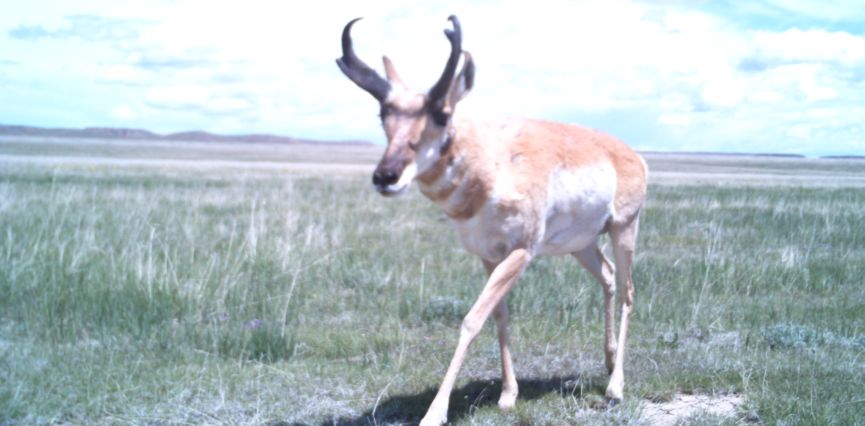
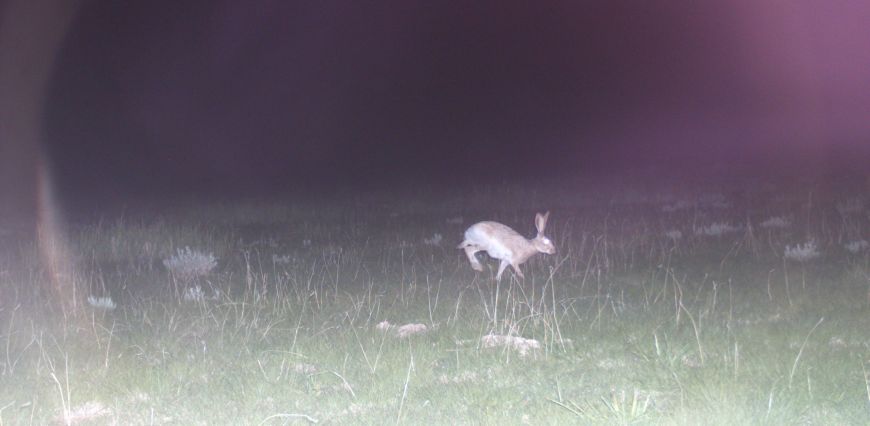
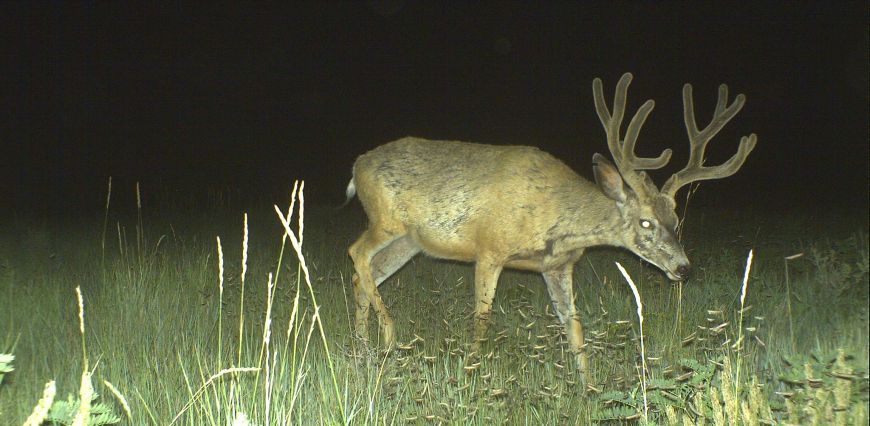
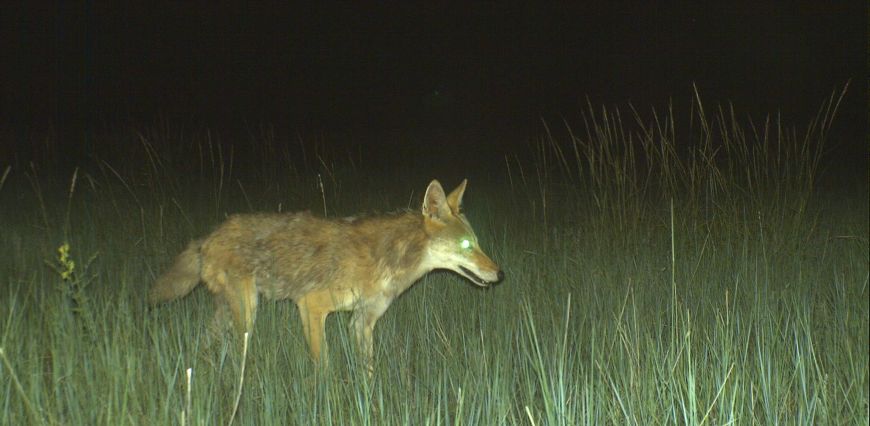
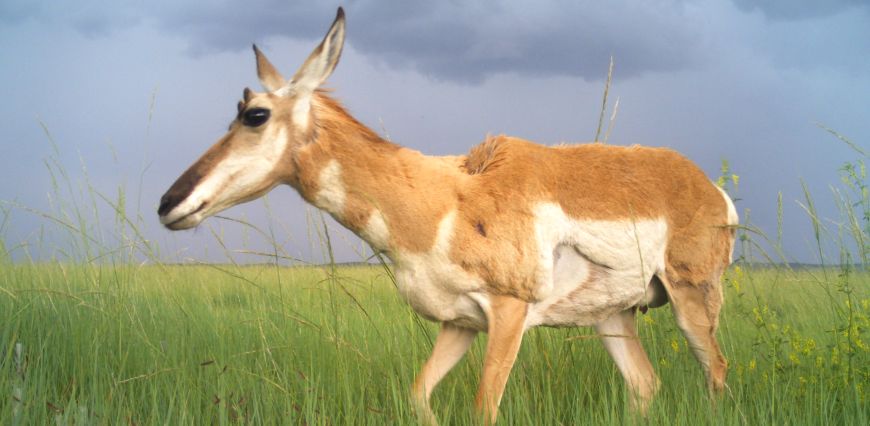
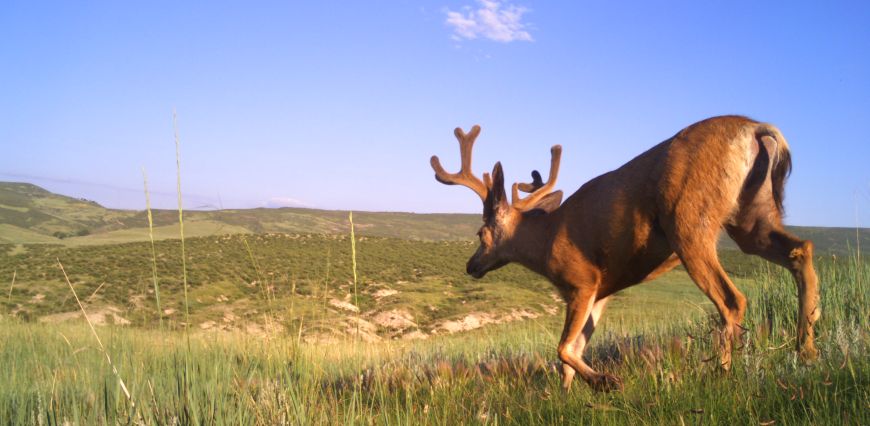
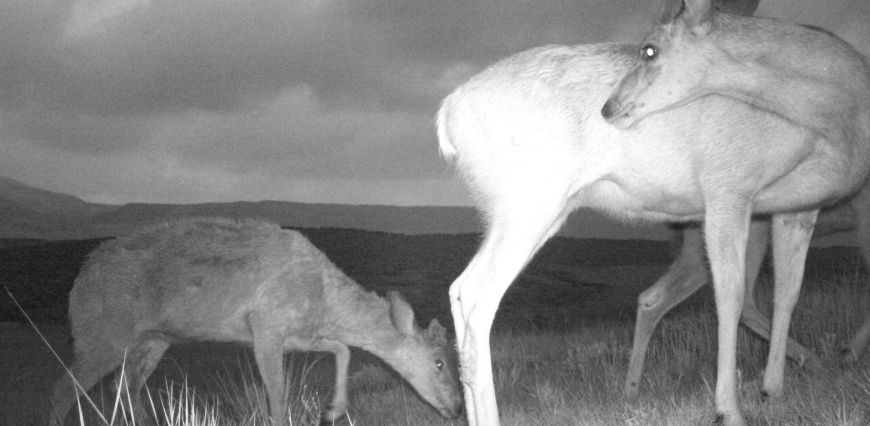
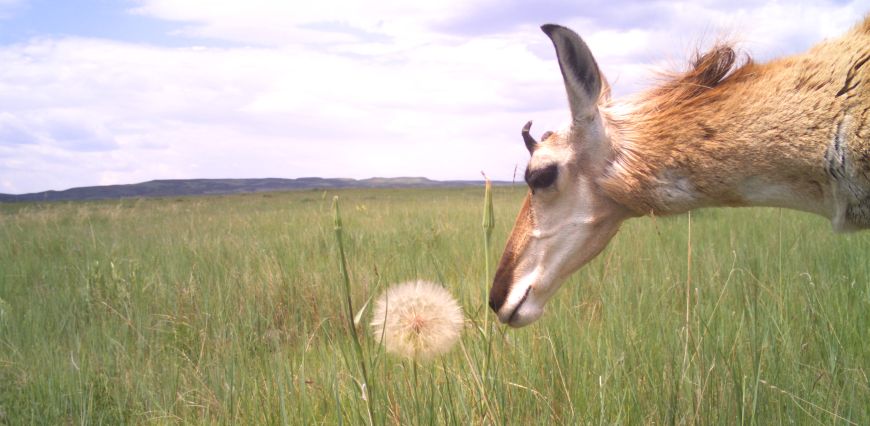
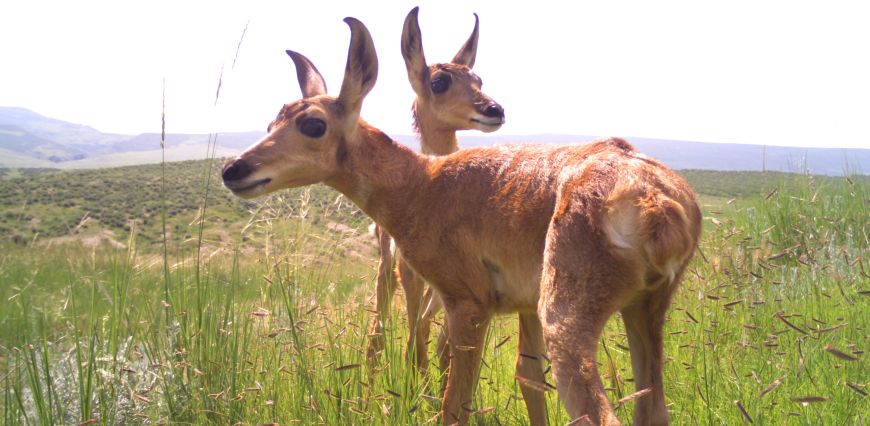
When graduate student Kate Wilkins hikes through Soapstone Prairie Natural Area and Red Mountain Open Space to check images on her wildlife cameras, she’s looking at much more than pictures of pronghorns and prairie grasses. The ecology doctoral student is looking at an entire ecosystem, from the wildflowers animals tread upon, to birds that fly over rolling hills, and to humans who hike the trails.
On Nov. 1, an iconic former resident – bison – will rejoin this ecosystem.
As part of a project to return American bison to the prairie of northern Colorado, Wilkins is studying the effects of bison release on the animal’s former stomping grounds in Soapstone Prairie Natural Area and Red Mountain Open Space in northern Larimer County.
Wilkins and fellow researchers have a unique opportunity to study the ecosystem before and after introduction of the Laramie Foothills Bison Conservation Herd this fall. The researchers will compare bison-grazed prairie to nearby lands grazed by cattle and to prairie that is not grazed by bison or cattle. These findings are expected to provide new insights into ecosystem health for plants, animals and human visitors.
“It becomes a story of how all these pieces interact. That’s the coolest part,” Wilkins said.
Her work is one piece of a three-pronged study involving reproductive technologies, ecology and social science. It is funded by a One Health seed grant from the Office of the Vice President for Research, and led by scientist Jennifer Barfield, who is conducting research into assisted reproductive techniques to conserve Yellowstone bison at CSU’s Animal Reproduction and Biotechnology Laboratory. The university’s colleges contributed funding, and grants were awarded early this year to encourage collaborative and interdisciplinary efforts in human, animal and environmental health.
Public celebration Nov. 1
On Nov. 1, National Bison Day, the public is invited to celebrate the reintroduction of the iconic bison to Soapstone Prairie Natural Area and Red Mountain Open Space. See live bison, enjoy family-friendly activities, and hear remarks from project partners.
Because of space considerations at the release site, this free public event will be held from 10 a.m. to noon at the National Wildlife Research Center, 4101 LaPorte Ave., CSU Foothills Campus. No registration is required but a reminder and updates are available here.
After Nov. 1, visitors may see the animals from designated trails. The bison grazing area, enclosed by a special fence that allows wildlife passage but contains the herd, will be visible from Soapstone’s entrance road and Cheyenne Rim trail. Note: the animals might not be visible at all times, as the area is expansive and hilly.
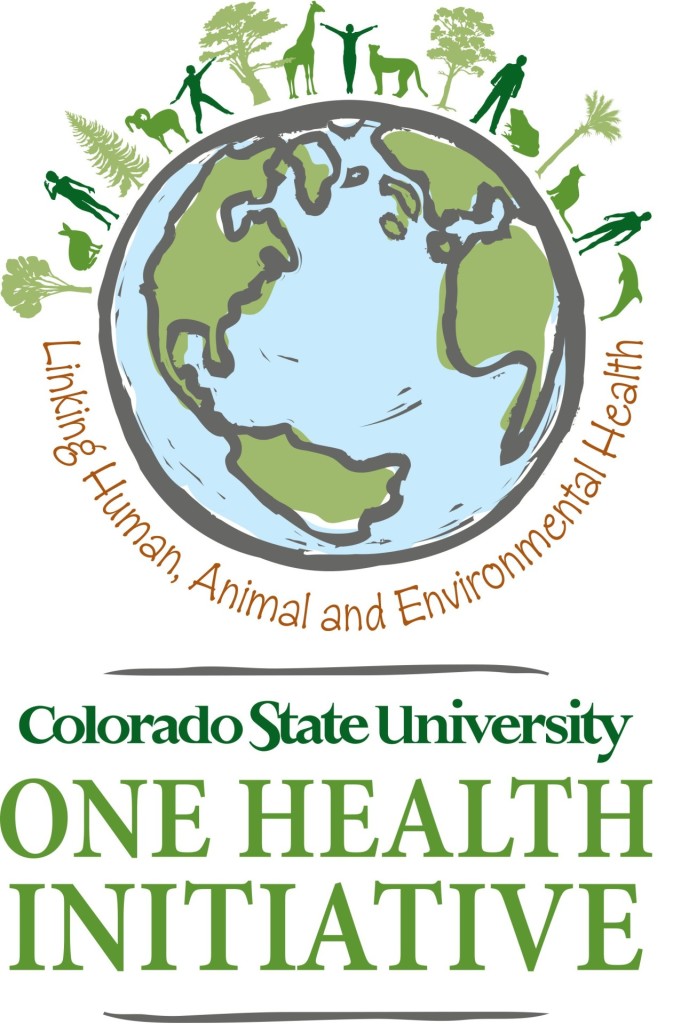 “This is an exciting opportunity to integrate our university’s strengths in ecology, veterinary medicine, assisted reproduction, environmental anthropology, conservation social science and human well-being,” said Liba Pejchar, associate professor in CSU’s Warner College of Natural Resources, and co-principal investigator on the ecological part of the study.
“This is an exciting opportunity to integrate our university’s strengths in ecology, veterinary medicine, assisted reproduction, environmental anthropology, conservation social science and human well-being,” said Liba Pejchar, associate professor in CSU’s Warner College of Natural Resources, and co-principal investigator on the ecological part of the study.
The bison project exemplifies the One Health view of human, animal and environmental interaction, with three interconnected research areas:
- The reintroduction of a genetically diverse, brucellosis-free bison herd via assisted reproductive technologies;
- An effort to better understand ecosystem effects of grazing North American plains bison on the land, grassland birds and other mammals; and
- Documentation of the bison reintroduction’s effects on visitors, ranchers and farmers, in terms of human health, livelihoods and connections to this landscape.
The herd
The Laramie Foothills Bison Conservation Herd will make its debut on land that bison once roamed, about 25 miles north of Fort Collins. Seven cows, two yearling heifers and one 5-month-old male will live on 1,000 fenced acres of public land within Soapstone Prairie Natural Area and Red Mountain Open Space.
The release is the culmination of a shared vision for species restoration on City of Fort Collins and Larimer County lands. Using technology to cleanse bison embryos of potentially dangerous pathogens and preserve valuable Yellowstone bison genetics, veterinarians with USDA-APHIS have collaborated with Barfield to propagate a herd free of both cattle genes and brucellosis, an infectious disease that affects cattle, bison and other wildlife.
The ecosystem
Wilkins and Pejchar have 60 wildlife cameras and bird survey stations on Soapstone and Red Mountain lands that capture bird and mammal activity in three zones – the bison pasture, a cattle grazing area and ungrazed prairie.
Since June, they have been collecting data on plant, bird and mammal communities to compare with post-reintroduction activity. This project creates a baseline, sets the stage for long-term research at the site and provides a model for ecological assessment of future bison reintroduction efforts in other regions of the United States, Pejchar said.
In one day, Wilkins can check about 10 cameras mounted on low poles on the windswept shortgrass prairie. On a cloudless, windy day in September, she opened one of the sturdy cases, first brushing away a thick spider web. Like a treasure chest, the box yielded photos of grazing deer, pronghorns that seem to be posing and a jackrabbit in mid-leap. Another camera held thousands of photos of grasses grown tall with the summer rains.
Previous research on the ecological effects of bison reintroduction has focused on changes in grassland composition and structure, with little emphasis on the wildlife species that rely on shortgrass prairie, Pejchar said. Because birds and mammals are great indicators of environmental change, her team will fill important knowledge gaps by comparing their activity before and after the bison arrive, and will enable comparisons with cattle grazing sites.
“We expect our group’s findings to be of broad interest to protected area managers, ranchers, veterinarians, ecologists, environmental social scientists and others seeking information on the many dimensions of bison reintroduction,” Pejchar said.
Above: Deer, pronghorn, jackrabbits and other animals trigger motion-sensing wildlife cameras at Soapstone Prairie Natural Area and Red Mountain Open Space. (Provided by CSU ecology graduate student Kate Wilkins)
The human dimension
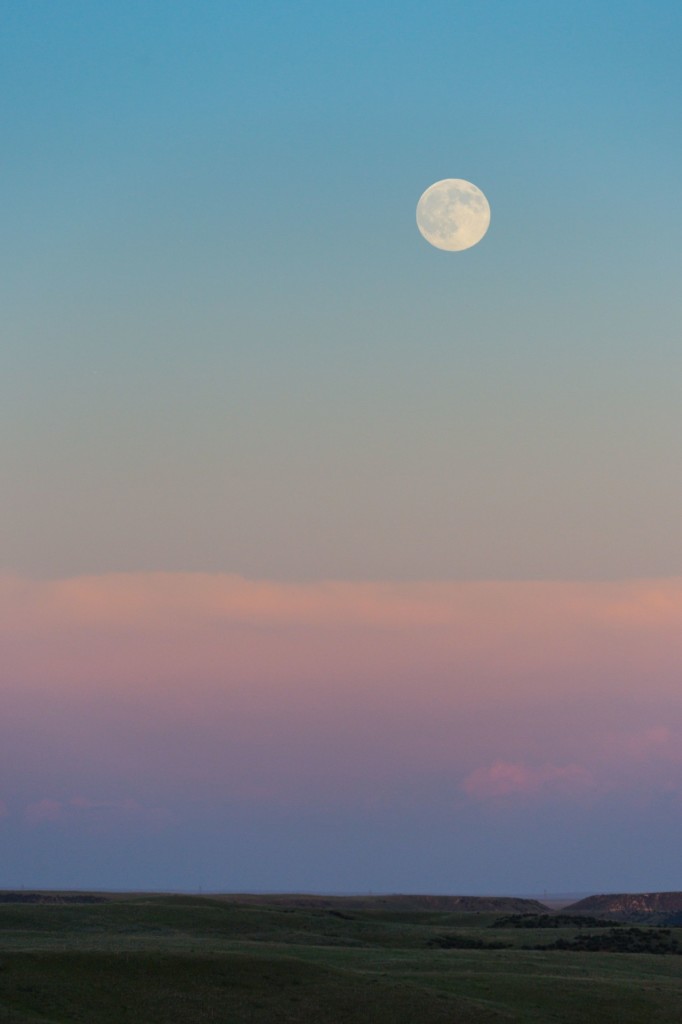
Social scientists, led by Denver Zoo’s Rebecca Garvoille, will assess how humans connect with the land and the bison. By understanding people’s experiences and sense of place through visitor interviews, surveys and trail counters, the project aims to help public agencies develop programs that enhance visitor experience, human health and conservation goals. An environmental anthropologist, Garvoille has studied the bison-human connection in Yellowstone National Park and in herds near Denver.
“Rebecca is the perfect collaborator because of her extensive work with bison-people interactions,” Pejchar said. “This reintroduction gives people in our community the chance to view the bison on land that was historically grazed by this iconic species. We expect our study will reveal whether this experience has the potential to change or enhance their connection with this special place.”
As co-principal investigator, Garvoille’s portion of the One Health study also seeks to understand whether the presence of the charismatic species motivates more people to get out and walk or hike in the area, leading to improved human health.
Looking forward
In its 2014 “Bison Report: Looking Forward,” the Department of the Interior called for new approaches to bison conservation and partnerships that “weave together landscapes large enough to cultivate the full interplay between bison and the surrounding ecology, which would also help promote biological diversity of other plant and wildlife species.”
This forward-thinking collaboration – Colorado State University, the City of Fort Collins, Larimer County, USDA-APHIS, Denver Zoo and the Folsom Grazing Association – embodies that charge. The multidisciplinary group’s research will help inform the decisions about the natural resource and recreation management of the site, say city and county officials.
“That’s what we think makes our project unique. Many people have studied important components of bison reintroduction, but to our knowledge, nobody’s addressed all of this – animal, land and human health – at once in the same place, together. That’s what we think is exciting about this amazing opportunity in CSU’s backyard,” Pejchar said.
“This is a sacred and special place that has so much history,” Wilkins said as she gazed over the arroyo where the bison might gather when they are released on Nov. 1. “It has an energy that is rejuvenating and awe-inspiring and deserves a lot of respect. People were out here thousands of years ago hunting the ancestors of these bison. It’s great that the city and county have been able to preserve this place for others to enjoy.”
To donate to the project, visit advancing.colostate.edu/BISON